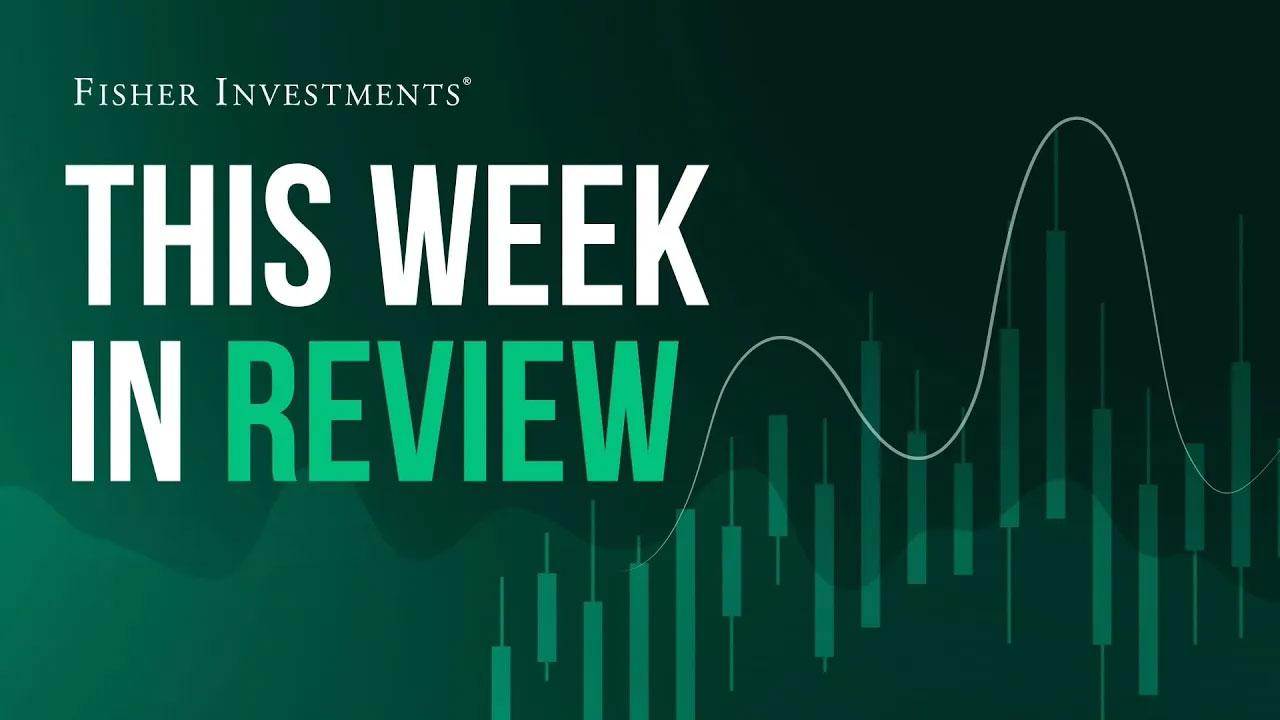Personal Wealth Management / Market Volatility
Putting Monday’s AI-Related Volatility in Perspective
Computing power is always getting more efficient.
Editors’ Note: MarketMinder doesn’t make individual security recommendations. Those mentioned below are incidental to the broader theme we wish to highlight.
Stock market volatility happens for any or no reason, any time, often without warning. Sometimes there is no apparent cause, just traders’ whims moving things. And sometimes there is a big story, making it seem like markets’ drop is somehow correct. In our view, this is the most dangerous kind, because it amps up the urge to react. Monday’s sharp selloff in Tech and the broader S&P 500 decline is a prime example. Take a deep breath, and let us break things down for you.
On the day, the S&P 500 fell -1.5% in price terms.[i] Several large Tech and Tech-like poster-children for the artificial intelligence (AI) boom fell more, pulling the Tech-heavy Nasdaq down -3.1%.[ii] The trigger? The revelation that Chinese AI firm DeepSeek developed a chatbot that isn’t far behind current iterations of ChatGPT and other US-driven applications … but with supposedly far lower costs and less computing power. Overnight, investors feared the AI paradigm shifted from requiring a mountain of advanced chips and massive investment in data centers to something more efficient, cheaper and less energy-hungry. Hence, stocks people have long presumed would benefit from massive data center buildouts took a pounding.
The worries here are twofold. One, that demand for advanced chips will tank. Two, that all the money large Tech firms have invested in their AI infrastructure will be a sunk cost. Both look like big, hasty overreactions.
Start with the big picture. Monday’s market reaction gives the impression AI’s plumbing has been set and stagnant for years—that every increase in output requires a set, comparable increase in cost, electricity and chips. But this isn’t true, nor has it ever been true in the computing world.
The high-tech world has long followed a handful of “laws,” which are less rules and more observations about computing becoming more powerful and more efficient over time. The most famous is Moore’s Law, which observed that the number of transistors on an integrated circuit doubles every two years—so computer chips get exponentially smaller and more powerful over time. Koomey’s Law observes the same for computing’s energy efficiency. Analogues for Large Language Models, “scaling laws” describe how the performance of machine learning models improve as key factors—such as model size, dataset size and compute resources—are scaled up.
As a result, AI has become increasingly more powerful and more energy efficient for years. Breakthroughs like DeepSeek’s (to the extent it is real) are the norm, not the exception, and are a continuation of model development. Advanced chipmaker Nvidia observed that, due to successive computing breakthroughs, Large Language Models (e.g., ChatGPT) became about 100,000 times more energy efficient in the past 10 years, even as they became more complex and powerful.[iii] Doing more with less, so to speak, is the primary driving force of the whole tech revolution, from the mainframe to the personal computer to the Internet to smartphones to chatbots, you name it. For all the attention on DeepSeek, OpenAI’s GPT models have gotten materially cheaper and higher-performing over time. So yes, this is potentially a step change, but not an unprecedented one, and the industry is persistently heading toward lower costs, fewer chips and less energy.
So, now, to the more immediate fears. Will demand for advanced chips plunge as models, from DeepSeek or other players, require fewer of them? We don’t think so, and recent history backs this up. As AI models have become more cost- and energy-efficient, they have raised, not reduced, data-center revenue for AI-oriented semiconductor and communication equipment companies. Yes, there is some credence to the notion of improved models having reduced hardware needs. But think it through. Cheaper models will be more widely used models, and we are only at the very, very early days of enterprise and consumer adoption. Rising demand for AI models—especially as models become less cost-prohibitive to adopt—means sustained semiconductor demand in the long run. It looks to us like markets stopped Monday at new model needs far fewer chips, so fewer chips will get sold, oh no! In time, they should weigh the likely reality: New models requiring fewer advanced chips to train are cheaper, so more companies will buy them and more chips will get sold, ah yes!
Which brings us to Monday’s second fear, that the big US players will lose this race as DeepSeek steals business from the leading US models. In our view, fears of AI model competition and the effect on cloud service providers is overstated. Again, we are at the very beginning of businesses and consumers adopting this, and winning these customers requires having what the industry calls a full “tech stack”—meaning a full package of data center infrastructure, the AI models, vast enterprise data, a broad install base of applications (both native and third-party) as well as security capabilities. DeepSeek has models everyone is geeking out over but it doesn’t have the rest of the tech stack needed for broad enterprise adoption. (Not to mention, there is abundant skepticism about the cost estimates DeepSeek touted.)
Yes, but it is open-source! That is a big rebuttal we see. Meaning, DeepSeek isn’t necessarily trying to win all the business for itself, but by making its source code public, it enables other players to build off its work and take the competition to the current industry leaders. Which, sure, in theory. But we have seen this movie before. Other players have already released open-source models. And they had precious little enterprise adoption, generated scant revenue and required cloud service infrastructure for customer adoption.
Monday’s market reaction offers contradictory sentiment forces. In the not-too-distant past, market participants were concerned AI scaling laws are showing diminishing returns or limited improvement in AI model performance compared to substantial capex requirements. With the DeepSeek model launch, the story is changing to one arguing model improvement will be significant and will materially lower the demand for advanced chips. We don’t think either fear has much merit, but they reflect a lack of euphoria in the market.
To us, Monday’s market reaction is mostly about sentiment. Investors have the broad sense that AI-related Tech companies are overextended and overinvested—they see a Tech capex bubble, with the excess concentrated in cloud service and AI. Parallel to this, they presume that Tech and the so-called Magnificent Seven stocks are the only things powering this bull market. So when a whiff of bad news hits, they overreact. But in reality, cloud capex can generate return on investment, and bull market participation is muuuuuch broader than Mag 7 fears ever gave credence to. Heck, Europe has been leading for the past month, and it has very little Tech. We think Monday’s volatility is a timely reminder that, for all the talk of AI euphoria being out of whack, there is still some stealthy fear in the marketplace.
So stay cool. The Tech sector is doing what it always does: improving, evolving and standing on the shoulders of giants. None of what you see in Monday’s headlines is new. It is just getting outsized attention because it resonated with investors’ lingering insecurities. Perversely, that is a reason to be optimistic—false fears are always bullish, after all.
H/T: Fisher Investments Research Analyst Hisham Dewan
If you would like to contact the editors responsible for this article, please message MarketMinder directly.
*The content contained in this article represents only the opinions and viewpoints of the Fisher Investments editorial staff.
Get a weekly roundup of our market insights
Sign up for our weekly e-mail newsletter.

See Our Investment Guides
The world of investing can seem like a giant maze. Fisher Investments has developed several informational and educational guides tackling a variety of investing topics.



